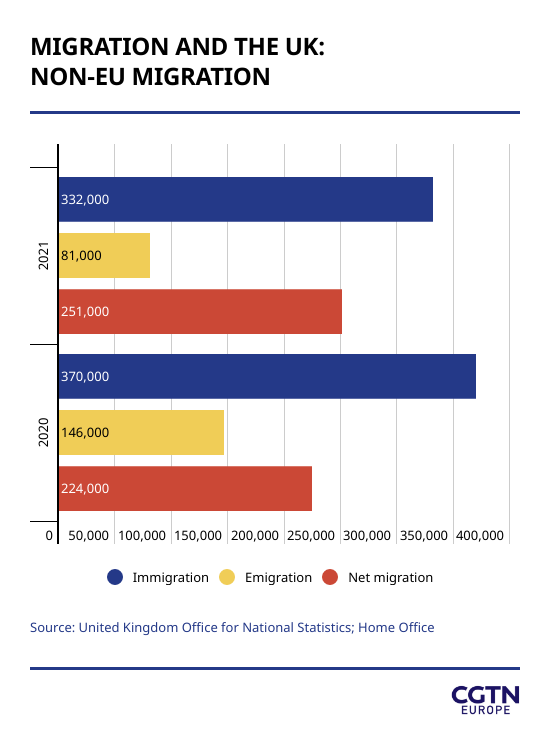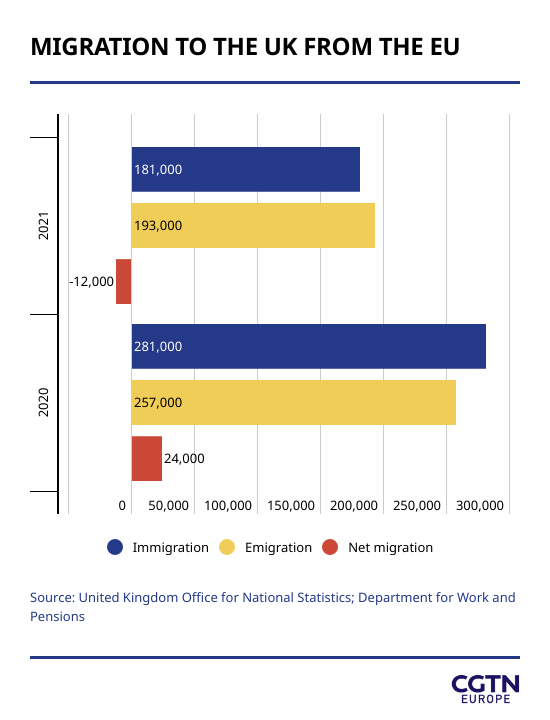
Pandemics and politics haven't stopped people wanting to migrate to the UK. /Hollie Adams/Getty Images
Pandemics and politics haven't stopped people wanting to migrate to the UK. /Hollie Adams/Getty Images
Provisional figures reveal net migration (people arriving minus people leaving) to the UK of almost a quarter of a million in the year to June 2021 – despite COVID-19 hugely restricting movement.
While the Office for National Statistics (ONS) is careful to point out that these are only provisional estimates, they indicate that net migration was in the region of 239,000 – not much less than the 260,000 for the previous 12-month period.
The influx was driven by immigration from outside the EU, which accounted for a net 251,000 increase with 332,000 arrivals and 81,000 departures. Historically, much of the non-EU net migration has been among students, with analysis suggesting increasing numbers of students coming from overseas to study in the UK.
READ MORE
Mariupol's last stand
What is monkeypox?
McDonald's leaves Russia for good

Going in the other direction, the number of non-EU nationals leaving the UK almost halved from 146,000 in the year ending June 2020 to 81,000 the following period. Non-EU immigration also fell, but only slightly, from 370,000 to 332,000 – meaning the net figures rose from an extra 224,000 to 251,000.
Meanwhile, the level of migration from the EU to the UK has gone into reverse. Whereas a net 24,000 EU citizens arrived in the UK in the year to June 2020, a net 12,000 left in the year to June 2021. While the ONS declines to speculate on possible causes, the end of the Brexit transition period on December 31, 2020 has affected movement between the bloc and the island nation.

Digging deeper into these figures, the number of EU citizens moving to the UK dropped from 281,000 to 181,000. While UK-EU emigration also fell, from 257,000 to 193,000, the net figures therefore fell from a 24,000 rise to a 12,000 drop.
"The 12 months to June 2021 was a period when migration behavior was impacted by the restrictions imposed to manage the coronavirus pandemic, as well as ongoing changes in migration policy following Brexit," said Jay Lindop, director of the ONS's Centre for International Migration.
Lindop also explained that the ONS has used "new, experimental, methods" due to data-collection problems posed by COVID-19. "Understanding the data in a time of change following Brexit and the pandemic has been challenging and, as more data becomes available, we have to adapt our methods accordingly," she said.

